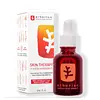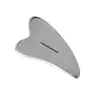What's inside
What's inside
 Key Ingredients
Key Ingredients

No key ingredients
 Benefits
Benefits

No benefits
 Concerns
Concerns

No concerns
 Ingredients Side-by-side
Ingredients Side-by-side

Water
Skin ConditioningGlycerin
HumectantCaprylic/Capric Triglyceride
MaskingGluconolactone
Skin ConditioningHelianthus Annuus Seed Oil
EmollientSqualane
EmollientCoco-Caprylate/Caprate
EmollientPropanediol
SolventDicaprylyl Carbonate
EmollientButylene Glycol
HumectantArginine
MaskingPhyllostachys Bambusoides Extract
Skin Conditioning1,2-Hexanediol
Skin ConditioningCitrus Junos Fruit Extract
Skin ConditioningSodium Citrate
BufferingSodium Chloride
MaskingBetaine
HumectantZinc PCA
HumectantAvena Sativa Kernel Oil
Skin ConditioningPanax Ginseng Root Extract
EmollientOphiopogon Japonicus Root Extract
Skin ConditioningPolygonatum Officinale Rhizome/Root Extract
Skin ConditioningScrophularia Nodosa Extract
Skin ConditioningPhyllostachys Bambusoides Juice
Skin ConditioningCentella Asiatica Extract
CleansingGlycine Soja Oil
EmollientGlycyrrhiza Glabra Root Extract
BleachingCapsicum Annuum Fruit Extract
AntimicrobialDioscorea Villosa Root Extract
Skin ConditioningPolygonum Cuspidatum Root Extract
AntioxidantKigelia Africana Fruit Extract
Skin ConditioningScutellaria Baicalensis Root Extract
AstringentEquisetum Giganteum Extract
Skin ConditioningRosmarinus Officinalis Leaf Extract
AntimicrobialCamellia Sinensis Leaf Extract
AntimicrobialChamomilla Recutita Flower Extract
MaskingLactobacillus Ferment
Skin ConditioningSodium Hyaluronate
HumectantPentylene Glycol
Skin ConditioningTocopherol
AntioxidantBisabolol
MaskingCitric Acid
BufferingEthylhexylglycerin
Skin ConditioningParfum
MaskingHexyl Cinnamal
PerfumingAlpha-Isomethyl Ionone
PerfumingLinalool
PerfumingCitronellol
PerfumingWater, Glycerin, Caprylic/Capric Triglyceride, Gluconolactone, Helianthus Annuus Seed Oil, Squalane, Coco-Caprylate/Caprate, Propanediol, Dicaprylyl Carbonate, Butylene Glycol, Arginine, Phyllostachys Bambusoides Extract, 1,2-Hexanediol, Citrus Junos Fruit Extract, Sodium Citrate, Sodium Chloride, Betaine, Zinc PCA, Avena Sativa Kernel Oil, Panax Ginseng Root Extract, Ophiopogon Japonicus Root Extract, Polygonatum Officinale Rhizome/Root Extract, Scrophularia Nodosa Extract, Phyllostachys Bambusoides Juice, Centella Asiatica Extract, Glycine Soja Oil, Glycyrrhiza Glabra Root Extract, Capsicum Annuum Fruit Extract, Dioscorea Villosa Root Extract, Polygonum Cuspidatum Root Extract, Kigelia Africana Fruit Extract, Scutellaria Baicalensis Root Extract, Equisetum Giganteum Extract, Rosmarinus Officinalis Leaf Extract, Camellia Sinensis Leaf Extract, Chamomilla Recutita Flower Extract, Lactobacillus Ferment, Sodium Hyaluronate, Pentylene Glycol, Tocopherol, Bisabolol, Citric Acid, Ethylhexylglycerin, Parfum, Hexyl Cinnamal, Alpha-Isomethyl Ionone, Linalool, Citronellol